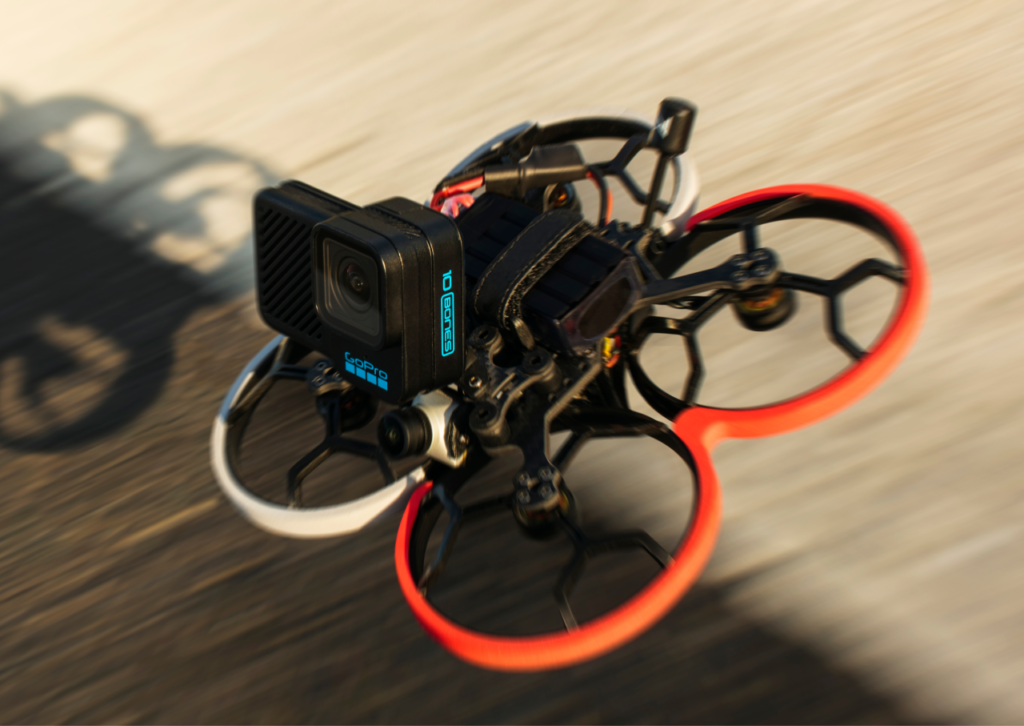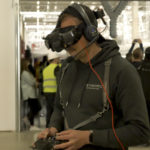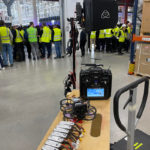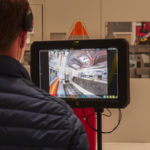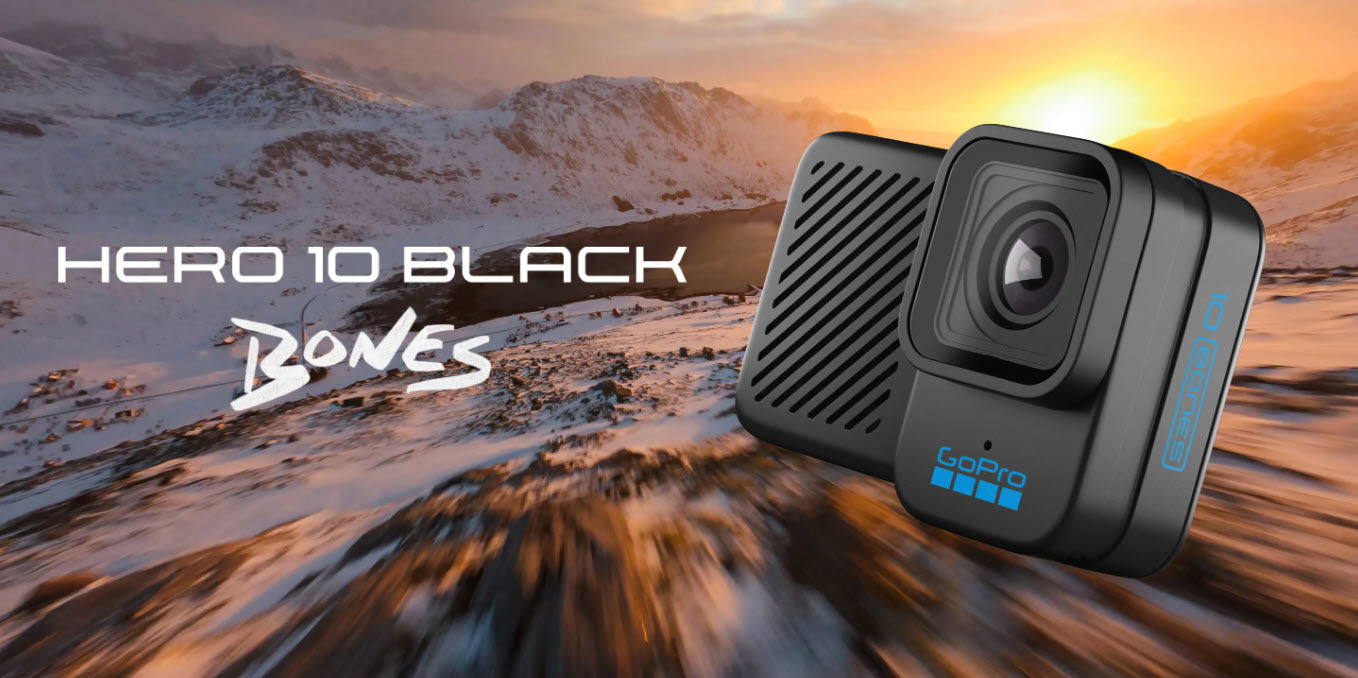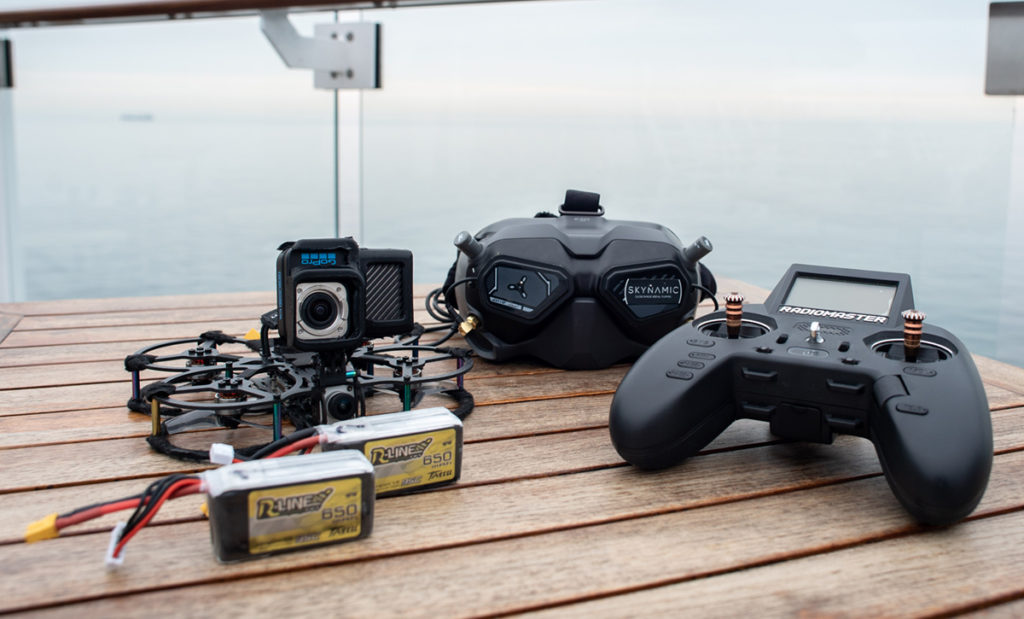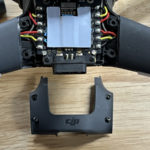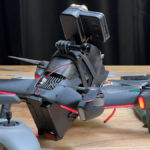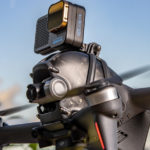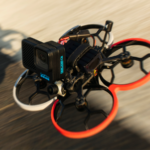You’ve seen amazing FPV drone footage all over these days – darting in and out of tight spaces and in otherwise impossible to capture angles and locations – but have you ever wondered how you can get quality imagery with such a small device? Many pilots have cobbled-together their GoPro HEROs that have been stripped of their casing and made 3D printed cages for them with some success. But now GoPro has made it even easier and straightforward with their recent release of the HERO10 Bones camera.
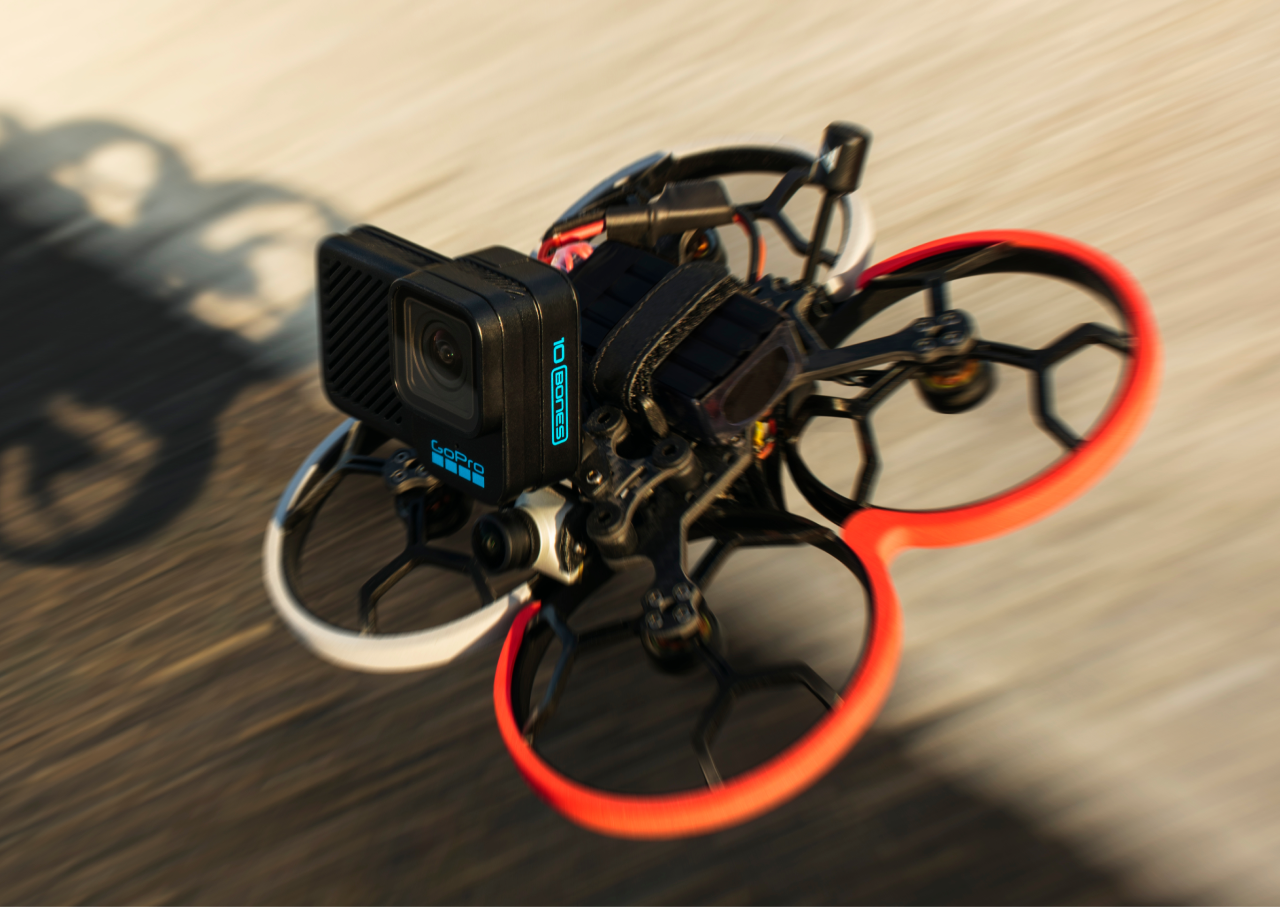
The GoPro HERO has been the go-to camera for FPV drone video since its inception, so it’s no wonder it still rules. However, with smaller and more efficient drone designs, pilots have been shedding as much of the on-board weight as possible and coming up with many creative solutions – including destroying their GoPros by stripping down everything to a “naked” state by eliminating the screens, case and everything that isn’t necessary to make it “work”. Often times it’s held onto the drone with precarious mounting solutions and 3D printed “cages”. This adds back more weight as a result and can affect the stability in the footage.
Since GoPro realizes the needs of their customer base across all activities and uses, they’ve developed a solution that should prove useful and streamlined for FPV pilots to get the quality footage they demand, and still utilize all the functionality of the GoPro – especially stabilization of ReelSteady.
But lets take a look at why this is important before we get into the product details… starting with the now famous Tesla Gigafactory promo video that was shot by my friend and colleague, Ferdinand Wolf with Skynamic in Germany. The amount of time in planning and choreographing these shots was amazing to get in and out of the machinery and moving robotics took precise timing and care, and fortunately, there weren’t any mishaps!
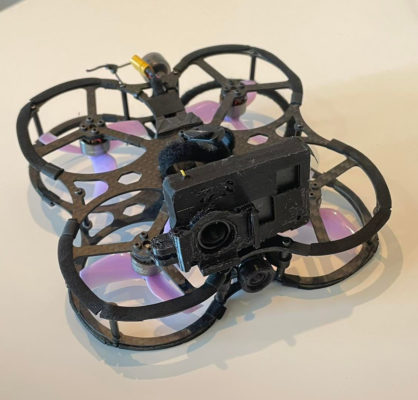 As you can see by these images, his FPV drone isn’t particularly beautiful to look at, but it’s a true workhorse. He’s had to get a 3D printed cage to house the “naked” GoPro that’s been stripped-down.
As you can see by these images, his FPV drone isn’t particularly beautiful to look at, but it’s a true workhorse. He’s had to get a 3D printed cage to house the “naked” GoPro that’s been stripped-down.
This is his 2.5″ Cinewhoop with 4s LiPo batteries for doing close range shooting like the shoot for Tesla Gigafactory in Berlin. It goes without saying he’s one of the world’s top close range FPV pilots and has shot a lot of major productions and films.
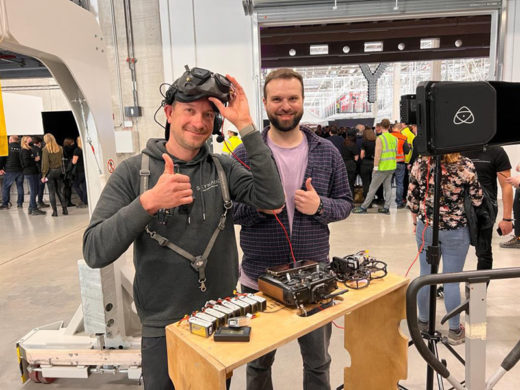
He also uses his 5″ race drones with 6s LiPo batteries for the exterior shots, and uses the Express RC link and DJI FPV Video link.
Since his forte is using his piloting skills, he typically shoots everything in GoPro ProTune Flat with Native WB and gives all the control to the editors in post.
We arranged to get him a GoPro HERO10 Black Bones to test on another amazing shoot that you’ll see later in this article. (Currently, the GoPro HERO10 Black Bones is only available in the US).
You can learn more about Ferdinand’s company at his web site Skynamic.net.
GoPro HERO10 Black Bones
The GoPro HERO10 Black Bones is super light – weighing just 54g with the elimination of the screens, battery and other structural components that add a lot of extra weight you don’t need on my FPV drone. The case is louvered for complete ventilation while still offering protection from crashes and other environmental elements.
It uses the same 1/2.3″ image sensor and GP2 processor that the HERO10 Black has and includes all the advanced stabilization technology of its bigger brother; including HyperSmooth 4.0 and ReelSteady 2.0 with the desktop application. These are extremely important for FPV flight to obtain smooth footage.
And it offers a wide variety of FPV video modes:
- 5.3K Wide 60/50/24p
- 5.3K SuperView 60/30/24
- 5K (4:3) Wide 30/25
- 4K Wide 120/100
- 4K (4:3) Wide 60/50/30/25
- 2.7K (4:3) Wide 120/100
- 2.7K Wide 240/200
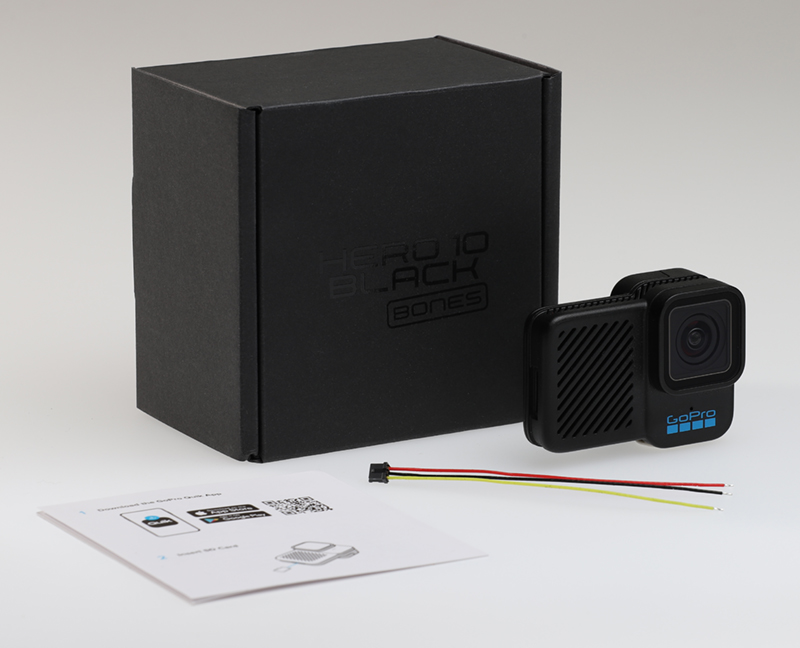
The HERO10 Black Bones comes with no accessories other than the 1.5mm pitch 3pin connector power pigtail and a quick guide with a QR code system to control your camera from your iPhone. It also works with the GoPro remote. The setup is simple to connect to your FPV drone for on-board power and doesn’t drain your drone’s battery much.
The SD card slot is easily accessible on the side without any doors or flaps to open and is easily accessible while mounted to your drone. Since you don’t have a battery to charge, you will rarely, if ever, need to remove the camera from your drone.
The simple controls on the back allow you to quickly change modes (Video, Photo, Timelapse) and to power on/off the device.
It does have a microphone (not sure why as all you’ll hear is drone buzzing) and the lens cover is removeable so you can use other filters or go “sans-cover” for even more weight reduction.
The GoPro HERO10 Black Bones in Action
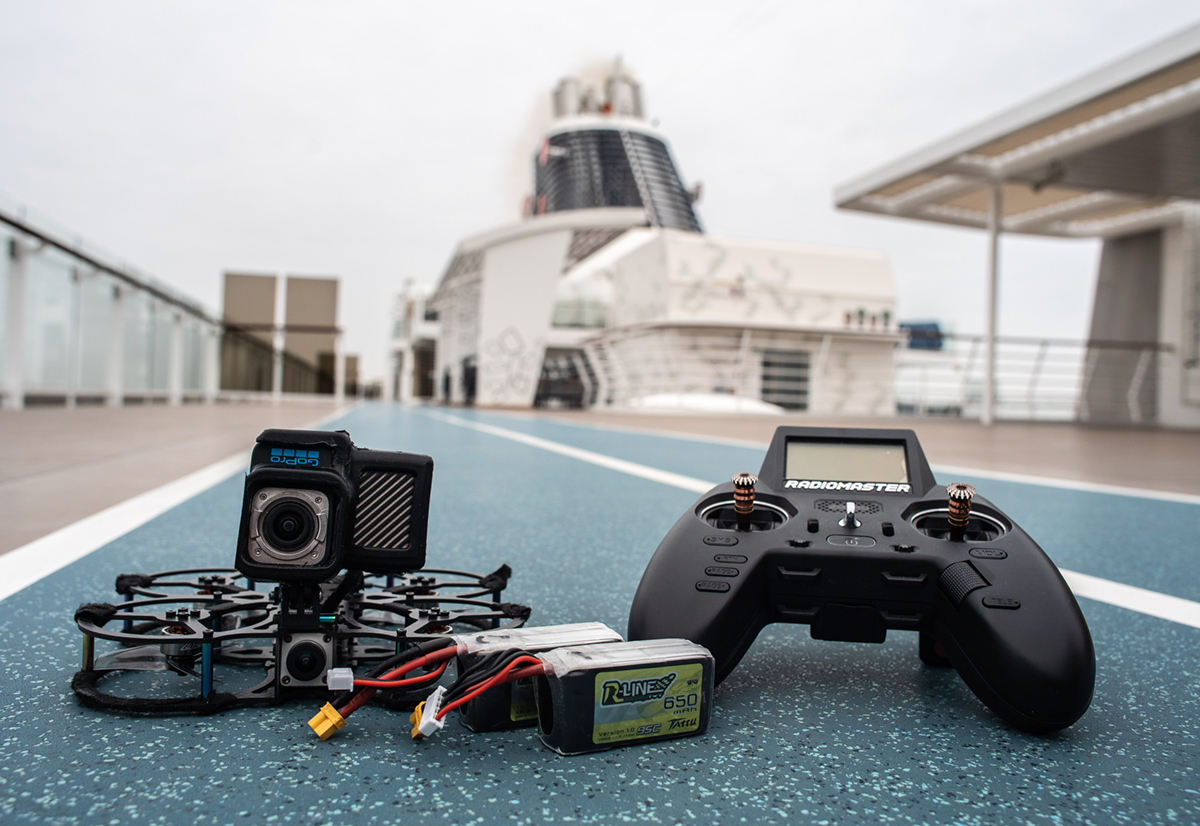
More amazing footage from Ferdinand Wolf
Ferdinand Wolf creates yet another spectacular fly-through video with his new set-up with the HERO10 Black Bones and has amazing results!
He has a new custom 3D printed mount for stability on his Cinewhoop and was hired to do a highly choreographed fly-through video on a cruise ship. Enjoy!
Attaching the HERO10 Black Bones to a DJI FPV drone??
I reached out to my friend Adam Simmons with AirView Cinematography in Portland, OR, whom I’ve known for several years since the early days of drone videography. He’s been dabbling with various airframes like all of us have over the years, but has landed squarely on the DJI platform for it’s accessibility and dependability to just work out of the box.
And to my surprise, he’s mounted a HERO10 Black Bones on his DJI FPV drone – primarily because he is a big fan of GoPro’s ReelSteady to get the best stabilized footage possible beyond what the internal stabilizers can do alone. Plus DJI still doesn’t offer a professional 24p (23.976fps) frame rate.
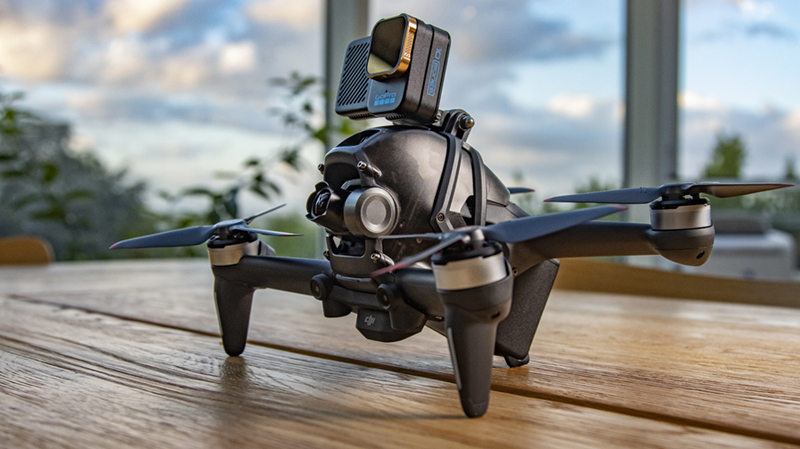
The big bonus of using a GoPro is for ReelSteady. Nothing stabilizes footage better. It blows the doors off what the camera can do internally as it uses the recorded gyro data so that your workstation’s GPU can do the heavy lifting.
He’s using a 3rd party SmallRig mount and the connection to power was super simple – a true first for DJI to make this accessibility on one of their drones. Simply remove a single plate and the pads are labeled to solder your power wires directly to the board.
Adam shared with me his take on this new setup – and his reasoning for adding a second camera to the DJI FPV drone when it already has a stabilized 4K camera built in:
“As now an old timer in the drone world, and someone who’s made a solid career out of flying them, I have little interest in building drones. I instead prefer to spend my time doing work with drones, than working on drones. But, since my entry into the industry I’ve been enamored with FPV flying. But, the thing that kept me away was the absolute DIY nature of it all. I wasn’t looking to become a hobby tinkerer. The DJI FPV Drone was exactly what I was looking for. It’s a very dialed in drone that makes going from GPS to fully manual FPV as smooth as a transition as possible. I used the Virtual Flight religiously, putting in 30 minutes every day, and was able to get very comfortable with manual FPV flight without the need of crashing, repairing, crashing, repairing, that for me would quickly burn me out and turn me away from FPV. But, the DJI FPV Drone isn’t perfect. As with everything DJI, it’s all proprietary. But, what is a coffin nail in the system is the camera inability to record in a 23.976p or 24p frame rate. The camera’s image quality already being mediocre and not up to the same level as even a Mini 2 would be forgivable if it at least fit into a pro video timeline without the need for frame blending, time remapping, or other post production tricks to prevent dropped frame jutter. Lastly, the Electronic Image Stabilization (EIS) is only ok. It does a modest job of smoothing out the camera’s footage, leaving you to further stabilize it in post.
“This is where using a GoPro comes into play. A GoPro can shoot in the film/commercial standard of 23.976 and 24p as well as be stabilized in post using ReelSteady. That last point being a blessing. When I started flying nearly 8 years ago, I stumbled across the videos of Robert McIntosh https://vimeo.com/103164838. They were posted at a time that people were still mostly hard mounting cameras, as gimbal tech was still developing. Robert’s videos featured sexy smooth footage captured using decased/naked GoPros on custom quadcopters. The smoothness of his footage is second to none and achieved by processing the gyro data from the GoPro in post.
“This post-processing stabilization, while adding an extra step, is drastically better than anything offered in-camera by any camera maker. It allows the use of a powerful GPUs and CPUs to adjust the image. Most of the new wave of viral FPV videos flying through bowling alleys and electric car factories are suing ReelSteady to achieve their buttery smooth movement. ReelSteady is so good that I would be using a GoPro on my DJI FPV Drone even if the DJI was able to shoot 24p.
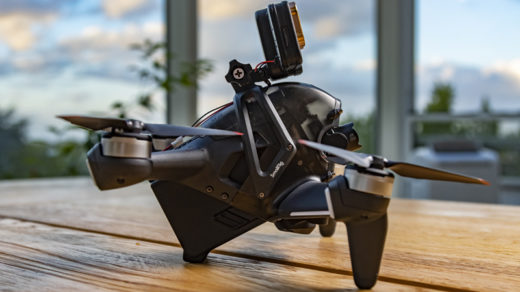 “My particular build still isn’t 100% dialed. I’m using a SmallRig DJI FPV Colorful Flight Accessory Kit camera mount, although I cannot endorse the product. It puts the camera directly over the GPS and makes satellite acquisition notably more difficult. Additionally, it allows for enough vibration in some camera setups and in one particular case was responsible for a crash. I have several different mounts on order that all put the camera further forward, clear of the GPS antenna and using firmer mounting strategies. Most notably is a mount that replaces the trim around the gimbal with an integrated GoPro directly over the gimbal. A perfect location for the GoPro HERO10 Black Bones.”
“My particular build still isn’t 100% dialed. I’m using a SmallRig DJI FPV Colorful Flight Accessory Kit camera mount, although I cannot endorse the product. It puts the camera directly over the GPS and makes satellite acquisition notably more difficult. Additionally, it allows for enough vibration in some camera setups and in one particular case was responsible for a crash. I have several different mounts on order that all put the camera further forward, clear of the GPS antenna and using firmer mounting strategies. Most notably is a mount that replaces the trim around the gimbal with an integrated GoPro directly over the gimbal. A perfect location for the GoPro HERO10 Black Bones.”
Here’s a short video sample of his test footage from his back yard in Portland, OR, just to compare the HERO10 Black Bones to the DJI FPV cam’s footage:
“The newest GoPro was an easy choice for this application. It offers a break in the usual cycle of being locked into DJI’s walled garden. As GoPro offers new camera, the DJI FPV Drone can continue to serve as it’s mule. Escaping the usual of buying a whole new drone system just for the next marginal upgrade. The integration of the camera onto the drone is very simple. The DJI FPV Drone has a dedicated and clearly labelled soldering point on the ESC/Power board, that is easy accessed by removing the back trim plate via 4 screws and the heat sink via the two center-most screws inside the battery compartment. After doing so, you’re looking squarely at two fairly large soldering points labelled GND_BAT and V_BAT respectively. GND_BAT being where you solder your ground and V_BAT your power. I opted to use a JST 1.25 wire and soldered and shrink wrapped it to the power lead included with the Black Bones. This supplies the needed power to the camera. You then use the barcode GoPro provides to connect the camera to Quik app, where you can preview your image and control your camera settings. They’re in no way to control the camera through any part of the DJI interface, so you’ll have to manually press the start/stop button on the camera or through the app. The wifi/bluetooth connection distance is surprising short, so don’t expect to be able to do it quickly or with the drone more than a couple feet away from you.
“The combo of the DJI FPC Drone and GoPro Hero 10 Black Bones delivers stunning footage in conjunction with ReelSteady. Combined with the easy of use and modification, long flight times (for a FPV), I see this as being a no-brainer for those looking to add FPV to their filmmaking offerings.”
For more info about Adam’s work, visit his website at http://www.airview.us/
Learn more about the HERO10 Black Bones on the GoPro website.

Filmtools
Filmmakers go-to destination for pre-production, production & post production equipment!
Shop Now